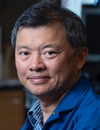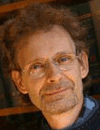Other Track AgendasBiobanking: Preparation, Storage & Analysis | Drug Discovery Automation - Chemistry Automation & Compound Management | Drug Discovery Automation - HCS & Cell Based Assays | Informatics for Automation | Liquid Handling and Robotics | Nano & Microfluidics | Next-Gen Sequencing Automation | Separation and Detection |

Wednesday, 30 May 201208:00 | Registration | |
Nanofluidics | Session Sponsors |
| | 09:00 | Magnetic Particle-based Microfluidic Systems and Nanofluidics for Analytical Applications
Martin Gijs, Professor, Ecole Polytechnique Federale de Lausanne, Switzerland
We describe microfluidic systems that use magnetic manipulation of magnetic microparticles for the realization of immunoassays, and nanofluidic devices for biological sample concentration. | 09:30 | Nanofluidics: Some New Fundamental Phenomena; Microfluidics: Efficient Green Energy Generation
J C T Eijkel, Professor, University Of Twente, Netherlands
The narrow confinement of nanopores and nanochannels leads to surprising transport processes which have important consequences for e.g. nanopore DNA sequencing and isotachophoresis. Furthermore, the application of two-phase flow can greatly enhance energy generation efficiency in streaming-potential based systems.
| 10:00 | Molecular Isolation on the Nanoscale
Joshua Edel, Professor, Imperial College London, United Kingdom
The detection of toxins and pathogens has been an increasingly vital concern to society. Their detection is often hampered by the minute quantities that need to be detected for early prevention and treatment to be effective. This work is aiming to utilize Surface Enhanced Raman Spectroscopy (SERS) to demonstrate single molecule sensitivity of these, from an array of gold nanoparticles (NPs) at a liquid-liquid interface. This work will be combined with reversible adsorption of these particles to such interfaces to allow the full potential of such systems to be realized: in the bulk, the NPs will have the intrinsic high surface area of nano-structures; while the localized particles will have the single molecule sensitivity of aggregates; coupled with the ability of the liquid-liquid interface to detect hydrophobic, hydrophilic and amphiphilic targets. | 10:30 | Coffee Break & Networking in Exhibition Hall | |
Manipulation & Detection |
| | 11:15 |  | Keynote Presentation High Sensitivity Optical Spectroscopy in Small Volume Environments
Andrew J deMello, Professor of Biochemical Engineering & Institute Chair, ETH Zürich, Switzerland
I will describe how nanoliter-sized droplets can be used as effective tools in performing high-throughput biological assays and in coupling two-dimensional analytical separations in both time and space.
|
| 11:45 | Depletion zone Isotachophoresis: A New Tool for Next-gen Life Sciences
Paul Vulto, Senior Researcher/Group Leader, Leiden University, Netherlands
Using a combination of microfluidics and nanofluidics our group has recently developed an ultra-small device unleashing the full power of isotachophoresis. The use of 'dzITP' will for the first time allow on-chip electrokinetic separations to be integrated into (V)LSI formats for massive parallel next-gen life science applications where high-quality separations are needed e.g. next-gen metabolomics. | 12:15 | Technology Spotlight - Invenios | 12:30 | Lunch & Networking in Exhibition Hall | 13:30 | Poster Viewing Session | 14:15 | Micro-fluidic Cytometry
Hywel Morgan, Professor, University Of Southampton, United Kingdom
Microfluidic systems have the potential to deliver fast, inexpensive and simple methods of cell analysis with applications in clinical practice, remote diagnostics at home or in resource poor (developing world) settings, and for environmental applications such as water testing. The technology is particularly attractive for point of care and patient self-testing. This talk will describe developments in micro-fluidic cytometry systems and outline some application scenarios ranging from a Critical Blood Count to in-situ systems for analysis of phytoplankton.
| 14:45 | Maneuvering Magnetic Particles and Cells through Interfaces
Nicole Pamme, Professor in Analytical Chemistry, Stockholm University, Sweden
Microfluidics based approaches are presented for manoeuvring magnetically doped particles or magnetically labelled cells through fluidic interfaces by means of externally applied forces.
| 15:15 | Coffee Break & Networking in Exhibition Hall | |
Market Orientated Device Development |
| | 16:00 | The Essential Tool for New Product Developments in the Life Sciences
Holger Becker, Chief Scientific Officer, Microfluidic ChipShop GmbH, Germany
Microfluidics has established itself as one core enabling technology for almost any new product development in the Life Sciences. Recent advances in this field fulfill the early promises of sample-in answer-out fully integrated analytical devices. We will provide an overview of available development and manufacturing tools and give examples of development of such devices in applications such as CBRNE detection, infectious diseases diagnostics, cell-based drug assays and biomarker analysis.
| 16:30 | Microfluidic Market: Where Can We Expect Growth?
Frederic Breussin, Business Unit Manager, Yole Developpement, France
Over the last 3 years, big diagnostic companies and other investors have put more money into the acquisition of microfluidic technologies than over the last ten years. However, not all the applications are poised for high growth. | 17:00 | Microfluidic Apps for Off-the-shelf Instruments
Daniel Mark, Head of Division Lab-on-a-Chip, HSG IMIT, Germany
This presentation will summarize the advantages of Microfluidic Apps: Disposable microfluidic chips being processed on off-the-shelf instruments. Examples include a microfluidic disk for automated DNA purification on a standard laboratory centrifuge and for automated genotyping on a standard thermocycler.
| 17:30 | Drinks Reception |
Thursday, 31 May 2012 |
Droplet Microfluidics 1 | Session Sponsors |
| | 09:30 |  | Keynote Presentation Large-scale Droplet Microfluidics: From Digital Biology to Targeted Therapy
Abraham Lee, Professor, University of California Irvine, United States of America
While droplet and bubble microfluidics promise new platforms for diagnostics and therapeutics, challenges remain in scaling up to large numbers of these “micro-vesicles” as reactors and carriers for biotechnology and biomedicine. Scaled-up microfluidic approaches are required and will be introduced. |
| 10:30 | Coffee Break & Networking in Exhibition Hall | 11:15 | Living Droplets: Cell-based Assays on a Miniaturized Scale
Christoph Merten, Principal Investigator, European Molecular Biology Laboratory, Germany
Droplet-based microfluidic systems allow the analysis of cells at very high throughput (up to 106 samples per hour), optionally even on the single-cell level. We present here a fully integrated platform and its application in functional single-cell hybridoma screening.
| 11:45 | Chemicals Screening in Droplet-based Microfluidics
Jean Christophe Baret, Group Leader, Max Planck Institute for Dynamics and Self Organization, Germany
Using droplet-based microfluidics, monodisperse droplets of water in oil emulsions are used as microreactors for biotechnological applications.
Here we will focus on the manipulation of chemicals in this format, starting from the basics of compounds storage in emulsions towards drug screening applications.
| 12:15 | Lunch & Networking in Exhibition Hall | 13:30 | Poster Viewing Session | |
Droplet Microfluidics 2 |
| | 14:15 |  | Keynote Presentation Challenges in Automating Flow Control in Micro and Nanofluidics: Application to Cell Sorting
Jean-Louis Viovy, Group Leader, Institut Curie, France
The talk will discuss the main challenges raised by flow control on the route towards fully integrated “sample to result” high throughput microfluidic instruments. The advantages and disadvantages of the main methods available will be discussed, and a few examples of biological applications will be reviewed.
|
| 14:45 | Automated Droplet Microfluidics for Biochemistry and Microbiology
Piotr Garstecki, Associate Professor, Polish Academy Of Sciences, Poland
Automated droplet microfluidics offers throughput and multiplexing in conjunction with miniaturization of the volumes of reaction or incubation compartments. A common platform for microfluidic modules allow to construct systems presenting versatile functionality for applications ranging from diagnostics to biotechnology.
| 15:15 | Coffee Break & Networking in Exhibition Hall | 15:45 | Micro Segmented Flow for Characterization of Combinatorial Effects in Toxicology
J Michael Koehler, Head of Department, Technische Universitat Ilmenau, Germany
The step-wise variation of concentrations and the addressing of two- and higher-dimensional concentration spaces by droplet-based microfluidics are applied for the determination of dose/response functions and combinatorial effects of toxins on microorganisms.
| 16:15 | Droplet Microfluidics for High Throughput Biological Analysis
Hakan Jonsson, Group Leader, Royal Institute of Technology, Sweden
The Nanobiotechnology group is focusing on interdisciplinary research combining nanotechnology and microfluidics with various biotechnology and medical applications such as, for example, microwell plates and droplet microfluidics. | 16:45 | Close of Conference |
|

 Add to Calendar ▼2012-05-30 00:00:002012-05-31 00:00:00Europe/LondonNano and MicrofluidicsSELECTBIOenquiries@selectbiosciences.com
Add to Calendar ▼2012-05-30 00:00:002012-05-31 00:00:00Europe/LondonNano and MicrofluidicsSELECTBIOenquiries@selectbiosciences.com